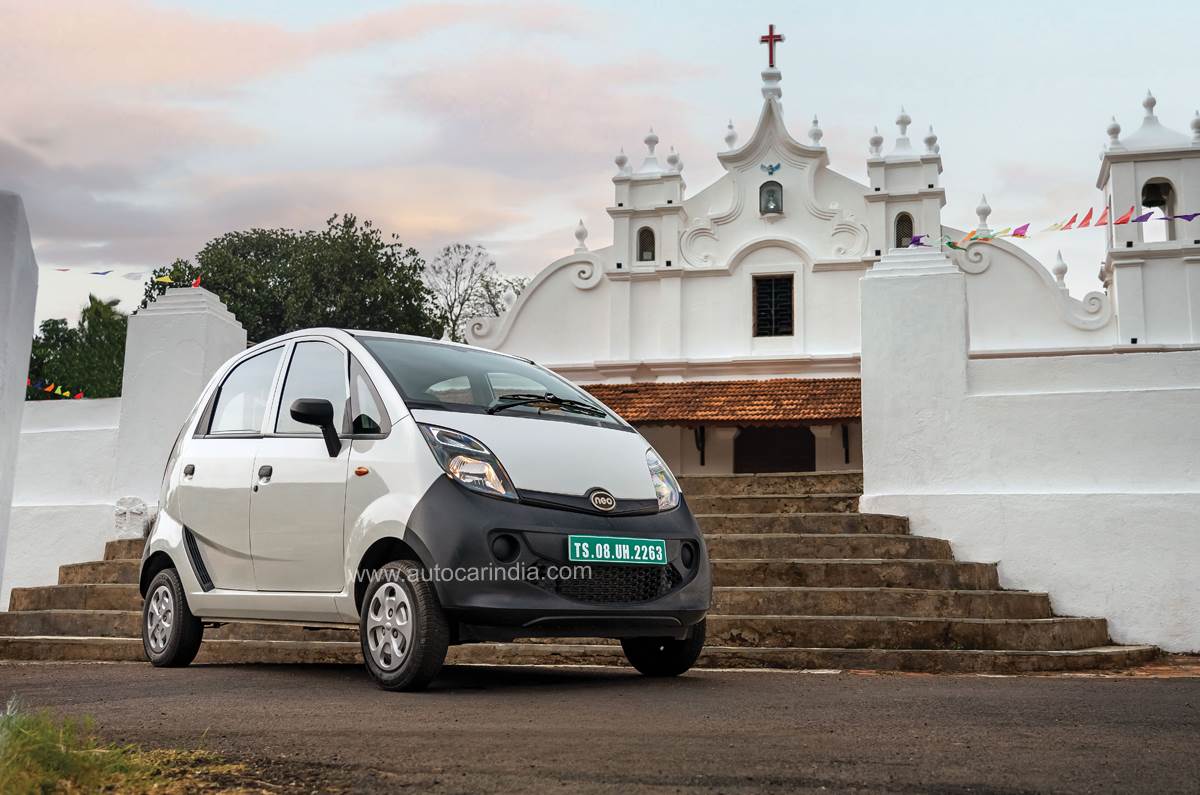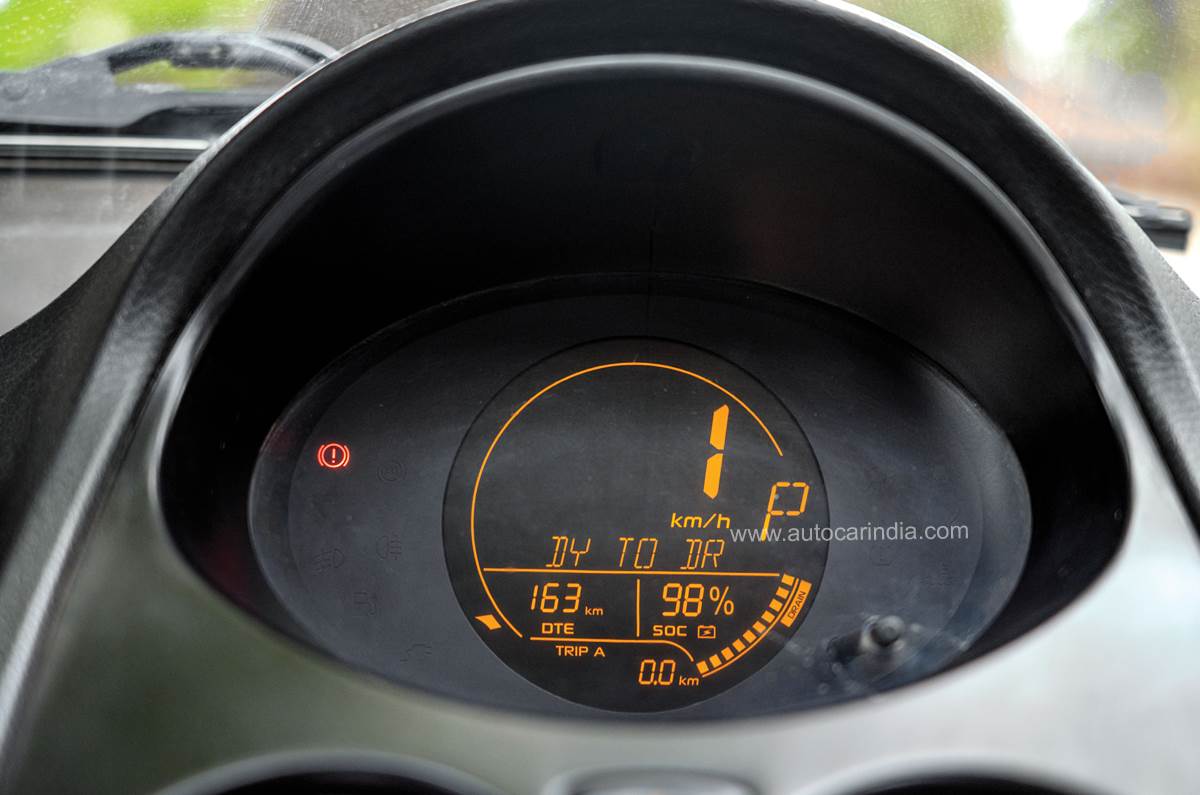The electric version of the Nano – the Neo – could have been the best Nano yet.
Here’s the one that got away. One that could have changed things. One that woulda, shoulda and probably coulda got the Nano back on track. The car in question is the Neo EV, of course. And we have it here in Goa because some taxi-spec 48V cars were finally snapped up by private buyers.
What is the Neo EV?
But who owned these cars, and why were they never put on sale? The Neo or electric Nano project was a joint exercise between Tata, and Coimbatore-based engineering and production house Jayem. The project took off in 2015 with chairman Ratan Tata paying close attention. There were two versions planned; a 48-volt version, this one, and a more powerful 72-volt version for owner drivers. The voltage of a system basically determines the speed at which electrons can be drawn through a system: a Porsche Taycan, for example, has an 800-volt system.

Apart from the badge, you’d be hard pressed to tell this apart from a regular Nano.
Jayem made a batch of 400 cars on order from Ola Cabs, and these were delivered for use in Hyderabad and Bengaluru at the beginning of the pandemic. The Neo EV, however, was never put on sale due to many factors, one of them being that engineers were in the process of reducing costs of the 72V version. Building a 72V architecture means you have to use more robust and expensive parts everywhere in the electric system.
Neo EV mechanical upgrades
So how and where does the Neo differ from the Nano? First up, there’s obviously no two-cylinder engine, no manual gearbox, no fuel tank and no exhaust system either. A 17kW battery goes under the front seats, the front suspension is stiffened up to take the extra load and there’s extra bracing underneath the floor to improve torsional and bending rigidity. Where’s the electric motor? It’s at the rear, towards the right and drives the rear wheels.

E-motor in black behind half shaft locally sourced.
The motor uses no permanent magnets and is known as a Tesla-type motor; named after Nikola – the man, not the company. Also known as an induction motor, it is locally sourced and makes only 24hp or 27hp in S mode.
Neo EV performance, ride and handling
With so little power, acceleration is gradual, even glacial. Induction motors tend to build speed in a relatively progressive manner and this only makes things feel more relaxed. It doesn’t feel completely out of depth, however, especially on small roads like these, and the faster you go, the better it gets. Still, you need a bit of help on the uphill sections where you need to shift to ‘S’ mode, and here you do get a bit more zip and it does climb slopes a bit better. It also feels more energetic and gets around four horsepower more. S is actually the mode I default to because it is clearly more pleasant.

Push the lever to the left to go from 24hp to 27hp.
Top speed, however, is only 80kph, but driving in S mode feels smooth and linear. What helps pull it along is the 68Nm torque, more than the petrol Nano’s 51Nm. What’s also particularly nice is that you don’t have any chuffing sound from the two-cylinder engine, no snappy clutch and no clunky gear lever either.
The Neo even drives better. There’s new-found agility and stability, down in part due to the improved suspension set-up and the lower centre of mass. The petrol Nano’s irksome high initial rate is absent on the Neo as it tucks into corners with greater poise. What also makes it quite comfortable to drive is the light and very direct power steering. It even turns nicely into corners, and this feels great on Goa’s tight and twisting roads. Even the brakes work pretty well. Yeah, more bite would be nice, but the manner in which the regen and friction brakes are blended helps make this car pleasant to drive.

Power steering is nicely set up, direct and light.
Even the ride is much improved. Jayem’s uprated suspension is much more stable and doesn’t toss you around. There’s some movement over larger bumps but, in general, it swallows rough sections quite comfortably. Insulation, however, is poor and when the surface below is granular, there’s plenty of road noise. You also keep hearing the sound of the fans that have to be used to cool the battery down: this battery isn’t liquid-cooled. And because the EV powertrain is so silent, this is even more accentuated.
Neo EV range and charging
Real-world range is in the region of 120 or 130km, however, if you drive the way I’ve been driving with my foot on the floor all the time, I don’t think you can expect more than 100 or 110km. Dheep Caldeira (the_rusty_cashew on Instagram), who drives his car almost every day in Goa, gets about 125km regularly, but he too always drives in Sports with the AC on. A full charge at home costs around Rs 120, reducing the running costs from around Rs 7 per kilometre on the petrol Nano to around Rs 1. This would have been game-changing for someone transitioning from a bike to a car.

Monotone digital display is easy to read at a glance.
What killed the Nano, however, and the Neo along with it, were more stringent crash test norms. But can Tata do a new Nano EV sometime in the future, one with a better body shell, airbags, anti-lock brakes and other essential safety kit? It would be much more expensive and wouldn’t be a Rs 1 lakh car for sure. But don’t write off Tata. It could look at making something more affordable than a Tiago EV sometime in the future.
Special thanks to owner Dheep Caldeira of Goa. Catch him on instagram @the_rusty_cashew.
Also See:
Source link



